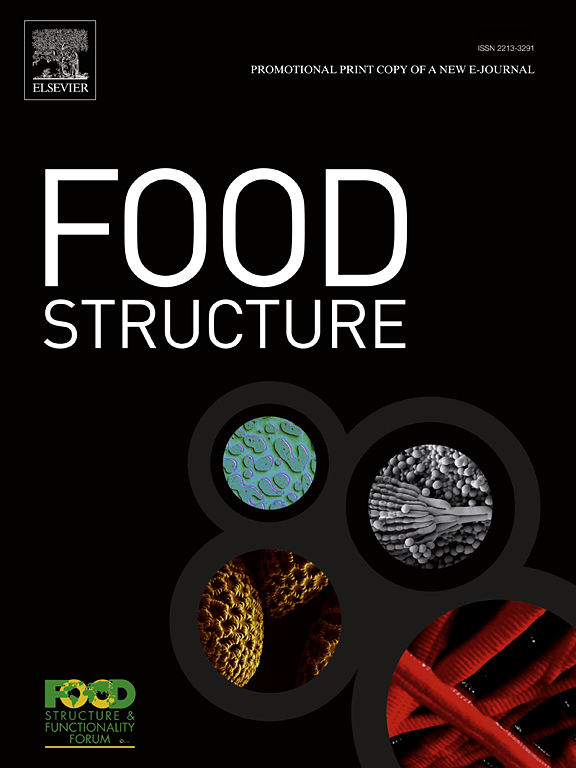利用豌豆和蚕豆蛋白开发冷冻结构肉类替代品:评估其在牛肉饼中的部分和完全替代
IF 5.9
3区 农林科学
Q1 FOOD SCIENCE & TECHNOLOGY
引用次数: 0
摘要
目前食品加工的重点是可持续的方法,以减少全球肉类消费,同时增加植物蛋白的摄入量。这项研究的目的是利用植物蛋白开发冷冻结构的肉类替代品。开发了豌豆基肉类替代品(PBMA)和蚕豆基肉类替代品(FBMA),并研究了它们与牛肉的相互作用。制备了植物肉(PB1 −PB3)、混合肉(HYB1 −HYB6)和对照肉饼(100% %牛肉)的配方,并对其营养、质地和烹饪性能进行了评估。与对照肉饼的29 %相比,混合肉饼的蛋白质含量在18 %至25 %之间,蒸煮损失显著减少(21-10 %),表明保持水分更好。使用晶格混合设计,配方被预测最大的弹性,咀嚼性和蛋白质含量,同时减少牛肉含量到54% %。这种混合肉类产品为消费者提供了一种选择,既可以减少肉类消费,又不会放弃典型加工肉类的熟悉、方便和风味。本文章由计算机程序翻译,如有差异,请以英文原文为准。
Developing freeze-structured meat alternatives using pea and faba proteins: Evaluating their partial and complete substitution in beef patties
The current focus in food processing is on sustainable approaches to reduce global meat consumption while increasing the plant protein intake. This study aims to develop freeze-structured meat alternatives using plant proteins. Pea-based meat alternatives (PBMA) and faba-based meat alternatives (FBMA) were developed, and their interaction with beef was studied. Formulations of plant-based meat (PB1 −PB3), hybrid-meat (HYB1 −HYB6), and control patties (100 % beef) were prepared, and their nutritional, texture, and cooking properties were evaluated. Hybrid-meat patties had protein content ranging from 18 % to 25 % compared to 29 % in control patties and a significant reduction in cooking loss (21–10 %), indicating better moisture retention. Using a lattice mixture design, a formulation was predicted that maximized springiness, chewiness, and protein content while reducing beef content to 54 %. This hybrid-meat product provides an option for consumers to reduce their meat consumption without giving up the familiarity, convenience, and flavour of typical processed meat.
求助全文
通过发布文献求助,成功后即可免费获取论文全文。
去求助
来源期刊

Food Structure-Netherlands
Chemical Engineering-Bioengineering
CiteScore
7.20
自引率
0.00%
发文量
48
期刊介绍:
Food Structure is the premier international forum devoted to the publication of high-quality original research on food structure. The focus of this journal is on food structure in the context of its relationship with molecular composition, processing and macroscopic properties (e.g., shelf stability, sensory properties, etc.). Manuscripts that only report qualitative findings and micrographs and that lack sound hypothesis-driven, quantitative structure-function research are not accepted. Significance of the research findings for the food science community and/or industry must also be highlighted.
 求助内容:
求助内容: 应助结果提醒方式:
应助结果提醒方式:


